Heritage Racers
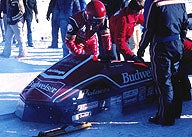
Insight into the Warning Family Collection
There’s a secret password that gets a caller a direct line to the president’s desk at Easton Transportation Inc.: snowmobile.
But be prepared to talk sleds because company president Keith Warning can spot a phony in a heartbeat. He can also out-snowmobile-talk most anybody. “I never get tired of talking snowmobiles,” he said.
While the main business of the company is flatbed longhaul trucking, Warning has another form of transportation as a side hobby. He’s a rabid collector of vintage snowmobiles, with a special eye for race sleds. So far this season, he’s already ridden 500 miles on his vintage machines, which is more than he’s put on his new 2009 Ski-Doo MX Z 50th Anniversary sled.
Warning, of Joliet, Ill., doesn’t act alone, though. He collects in cahoots with his dad, Jim, and his cousin, Brad. They’re often seen together at various vintage snowmobile events, and their machines are often referred to as “The Warning Family Collection.”
The Collection
The collection isn’t just a random selection of old iron. With the exception of a few nostalgia machines, most of the sleds have a race pedigree. Warning is especially proud of the 1937 Eliason Motorboggan that won the open class in the first Eagle River derby in 1964. He owns the Boss Cat II and III, Big Bud (the second Budweiser Sno-King speed sled with a blown- and alcohol-injected V8) and the Budweiser Sno-King III (with four 750cc V-max 4 engines). “I got it for a steal on eBay,” he said of the Sno-King III, even though it’s the most expensive machine he’s purchased. His current pride and joy is the Chopper City Special, which is undergoing restoration.
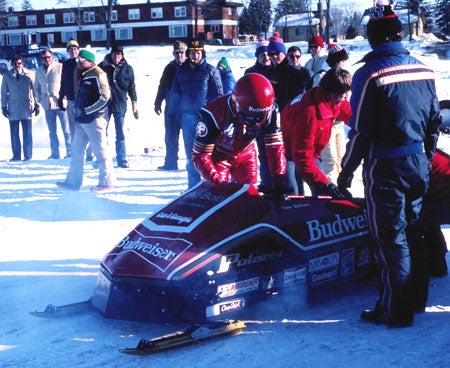 The Warning Collection includes versions of the Budweiser speed sled shown here ready to run in Minnesota about 1979.
The Warning Collection includes versions of the Budweiser speed sled shown here ready to run in Minnesota about 1979.Warning estimates that their collection holds about 150 sleds, which are distributed between a warehouse in his home state of Illinois, storage in Minocqua, Wis., and the display floor of the Snowmobile Hall of Fame in St. Germain, Wis. All of the sleds are in running condition, he said, and while he won’t take the Budweiser Sno-King to top speed on the drag strip, he’ll start it up and drive it a bit at various shows. He’ll race other vintage sleds at various events, though — he likes the free-air open class and his 1973 free-air Starfire.
Getting Started
The collection started, unwittingly, when Jim Warning purchased a couple of used Ski-Doos in the early 1970s to keep at their Minocqua-area cabin. The original machines are gone, but the Ski-Boose pull-behind — where Keith and his siblings rode — is still in the collection. Various favorite machines throughout Keith’s youth were never sold or scrapped, which marked the start of a collection.
In the early 1990s, Keith Warning started a collection in earnest. While most people were junking old Sno Pro machines, Warning was hauling them home and fixing them up. “They could not believe anyone could be interested in their machines,” Warning said of former racers. “They’d ask me why I’d want something that was hard to start, didn’t run well and didn’t ride well when I could go to the dealership and get a brand new snowmobile.”
Along the way, Warning became increasingly select in what he purchased. While he’s quite mechanical and does large parts of restorations himself, he stopped buying machines that came in boxes of parts. “I learned that the hard way with a 1972 Skiroule racer that was missing a lot of parts,” he said. “Now I just try to bring home a complete sled or one that needs a mechanical restoration. I’m not afraid of an engine that’s locked up.”
Expert Choices
He began honing in on race machines — Keith is the expert in models from the 1960s and 70s, especially the free air sleds; Brad is a 1980s dude who likes the IFS Sno Pro racers; Jim is the generalist. Sometimes they’ll buy sleds as a group; sometimes as individuals. When they purchase a machine, they make sure they can prove its race pedigree, often with pictures from old racing magazines. “People are cloning sleds now, so we don’t want to be duped,” he said.
Warning tries to do as little restoration as possible to machines, especially in terms of appearance. As long as a sled doesn’t look thoroughly abused, he’ll keep the original body — especially if a race number or sponsor stickers are on it.
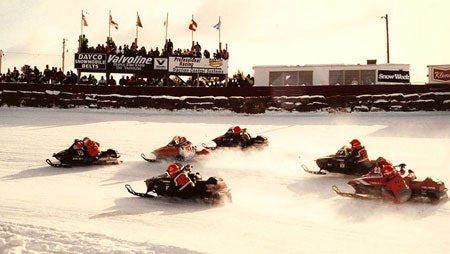 Each family member has a specialty that may include IFS racing sleds that competed at the Eagle River derby.
Each family member has a specialty that may include IFS racing sleds that competed at the Eagle River derby.By the latter part of the 1990s, vintage collecting started its popularity surge. At the same time, the Internet changed the game in terms of information, purchase potential and price. “I’ve always told myself that if I think I’ve paid too much, to wait a few years,” he said, “and I’m always glad I made the purchase.”
Word Of Mouth
But with all the technology available, Warning still finds most of his machines by old-fashioned word-of-mouth.
He’s also been surprised many times when he’s arrived at work to find an old snowmobile by the back door. In many cases, they’re junkers that he scraps, but every now and then a rare jewel appears, such as the 1976 Yamaha SRX. “I still have no clue who put it there,” he said.
While Warning will show his collection to people who ask, he’s found a more public way to display his machines. He recently started an association with the International Snowmobile Hall of Fame where he has seven or eight machines in the museum at any time, rotating two or three out every year. Keith Warning sits on the museum board, and the museum re-named the main display area “The Warning Gallery” after the family made a $100,000 contribution to the building fund.
But one doesn’t need to be a major benefactor to get into the vintage scene, Warning said. “If you just want a nice old sled with side pipes, you can get into it very reasonably for about $500 for a Polaris TX,” he said.
He also said that more recent race machines could be tomorrow’s collectable. “There are a lot of race sleds, even oval sleds from 1990s, that are just sitting around and are very inexpensive,” he said. After his new MX Z, which he plans on keeping, his next-oldest machine is a 1996 Formula III raced by Mike Campbell.
What’s his collection missing? “I’d love to have a Blair Morgan sled in my collection,” he said.



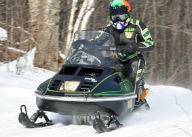
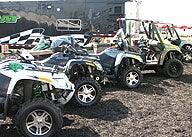
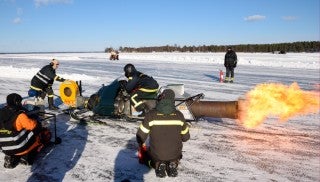


 Your Privacy Choices
Your Privacy Choices